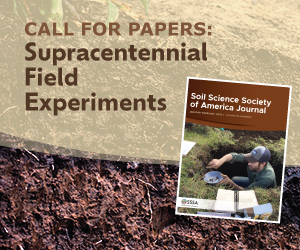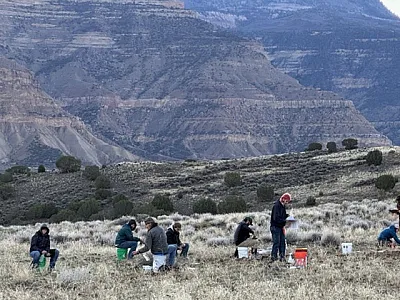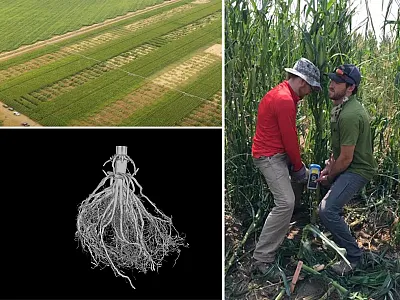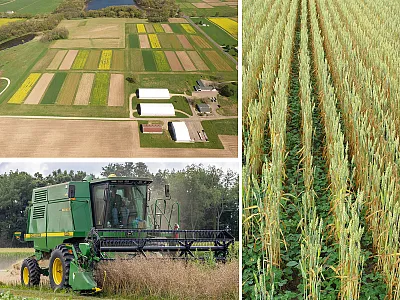The Nation and the World Needs Research in Crop Science
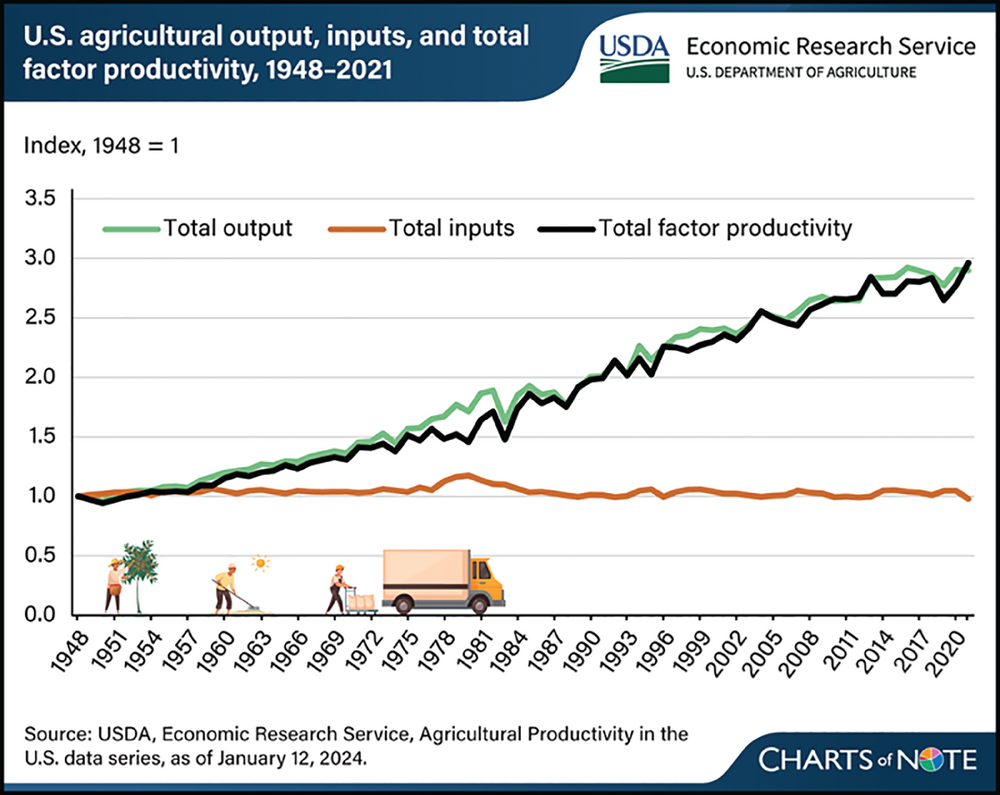
Every night, newscasters discuss dysfunction in the U.S. Congress. So why are we, as the Crop Science Society of America (CSSA), so focused on science policy? The truth is that politics is messy because politics is the activity of making decisions and sharing power in groups, and the media spotlights the problems that arise when sharing power.
Congressional and executive offices exist to support their constituents. They are staffed by talented, dedicated (often young) people who want to understand an issue and determine how it fits with priorities in government. Frequently, these staffers have little direct knowledge of agriculture. When members of CSSA gather together for Congressional Visits Day in Washington, DC, as we did with 45 of our colleagues from ASA and SSSA on March 4–5 2024, we have the opportunity to explain why agricultural science is critical to food production, the economy, and the environment. We describe how our Societies are a diverse group representing all of those affected by agricultural research, including large global companies, large farms, smaller family‐owned farms, various crops, the turf industry, government scientists, laboratory‐ and field‐based scientists, Certified Crop Advisers, and students.
Our group of 45 was broken into 10 teams of four to five people each, which fanned out to visit 63 congressional offices and agencies that represented 23 states. We were asking for support and passage of the 2024 farm bill, increased support for the USDA National Institute of Food and Agriculture (NIFA) Agriculture and Food Research Initiative (AFRI), the Foundation for Food and Agriculture Research (FFAR), and for the Agriculture Advanced Research and Development Authority (AgARDA). As the conversations unfolded, the congressional members and their staff emphasized that 2025 will be a tough year for new funding. We have heard this message before. So why do we return year after year to emphasize the need for support for agricultural research? Because we must be at the table, entering into relationships and telling our story for our messages to be heard and remembered.
Investment in agricultural research has been successful for the United States. Since 1948, total U.S. agricultural productivity has increased even while total inputs did not. Productivity increases benefited from the efficiencies driven by new genetics, equipment, and chemistries (Figure 1). Yet, in the last 20 years, U.S. agriculture research investments have declined from almost $6 billion per year to around $5 billion while the European Union, Brazil, India, and China have all increased their funding of agriculture research. At the same time, the total productivity growth in agriculture of China, Brazil, and other countries outpaced that of the U.S. (Figure 2).
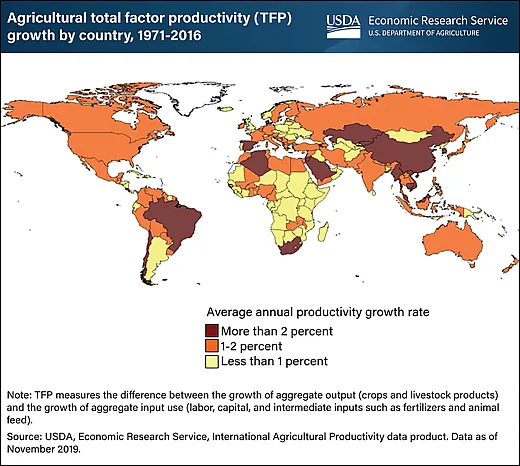
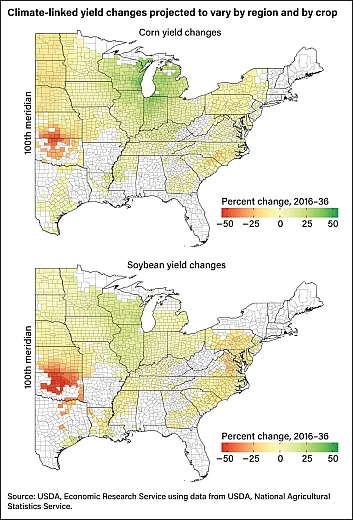
If the U.S. slips further behind in agricultural research funding, we will have trouble managing the complex future ahead of us. We are already experiencing the extremes of fluctuating weather patterns. These changes will lead to regional shifts in crop adaptation (Figure 3), a need for increased drought and heat tolerance in many crops, changes in pest and weed pressure, shifts in planting or harvest dates, incorporation of agroforestry or livestock, and increased cost of many inputs. Agriculture currently contributes 10% of greenhouse gas emissions (Figure 4). Agriculture also offers methods to partially reduce some of the effects of climate change through changes to land management and practices, but current farm policies related to risk management, crop insurance, conservation programs, and water use will have to adapt to changing scenarios. The nation and the world needs research in crop science, including research in plant breeding, plant physiology, and cropping systems, together with research into agronomy and soil science.
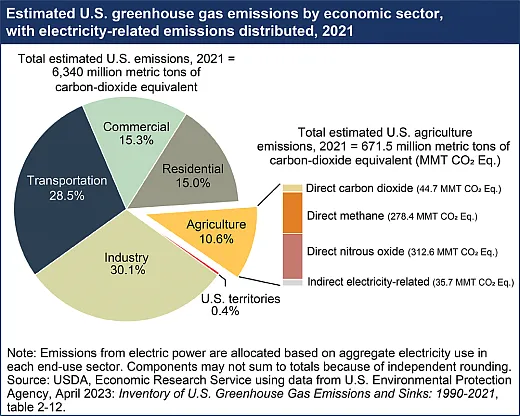
Our Societies—CSSA, ASA, and SSSA—are leading voices for food, agriculture, and natural resources research. We know the importance and relevance of the work we do, and we also know that many other people don’t fully understand it. Think of the times when you have tried to explain your work to your family! Brush up that elevator speech! It is critical that we speak up and advocate for agricultural research because we are the only people who can do it effectively. The CSSA members who participated in the 2024 Congressional Visits Day had overwhelmingly positive things to say about the experience. They were impressed by the many people who are making things work in government, noting that congressional staffers want to hear from their clientele.
The CSSA Board included “Increase science policy programming for members and increase advocacy to expand our value to external stakeholders by being the first stop for evidence‐based science” as one our Society’s six objectives for our 2024–2028 strategic plan. We have a Science Policy Committee that meets bi‐monthly, a staff member (Luther Smith) who heads up the science policy effort for our Societies, and a contracted science policy advocate working on our behalf in DC (Julie McClure of Torrey Advisory Group). If you’d like to get involved in our science policy efforts, let Luther know (lsmith@sciencesocieties.org).
Our science policy efforts are many. In the past two years, we have written letters to Congress and policymakers in support of funding for USDA‐ARS, USDA‐NIFA‐AFRI, Equipment Grant Program, AgARDA, Hatch Act formula funding, and Smith‐Lever funding. We signed on to 16 letters with coalitions of our sister scientific societies to support increased funding for such things as the National Science Foundation, the Sustainable Agriculture Research and Education Program, the National Coalition for Food and Agricultural Research, the Food and Agriculture Climate Alliance, and the Department of Energy. We conveyed our priorities for plant breeding and crop improvement to the National Agricultural Research, Extension, Education and Economics National Genetic Resources Advisory Council. Under the Science Policy tab on our website (crops.org/science‐policy), you can read about these and other efforts to increase research funding, why the farm bill is important, our climate solutions statement and other policy statements, and letters to policymakers.
Keep advocating for agricultural research. Consider joining us for Congressional Visits Day in 2025. Ask your local legislative staff members to join you at your next field day. Give them a tour of your lab or greenhouse. And don’t forget to tell your story to state and local government representatives, university legislative affairs personnel, and commodity groups. Consider joining the Council for Agricultural Science and Technology (CAST). CSSA (as well as ASA and SSSA) are sustaining members of CAST, an organization with the mission to convene and coordinate networks of experts to assemble, interpret, and communicate credible, unbiased, science‐based information to policymakers, the media, the private sector, and the public. Membership is free for students and by donation for others.
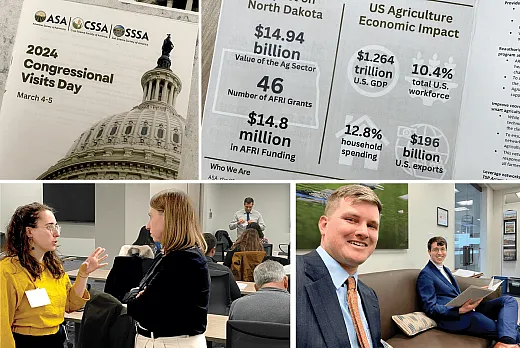
The federal government funds more than 60% of the agricultural research conducted within the United States. Funding for the USDA research agencies, Agriculture Research Service (ARS), NIFA, the Economic Research Service, and the National Agriculture Statistics Service, has been dwarfed by increases in research funding for the National Science Foundation and the National Institutes of Health. Even though 2025 is a tough year for federal funding increases, we must continue to speak up for increases to agriculture research funding. Our research benefits all Americans through affordable access to nutritious and safe food, regenerative uses of land, and more sustainable living environments.
Additional Resources
Barbuto, R., Dabek, G., & Mercier, S. (2023). Prioritizing agriculture research in the 2023 farm bill. Chicago Council on Global Affairs and The Farm Journal Foundation. https://globalaffairs.org/research/report/prioritizing‐agricultural‐research‐2023‐farm‐bill
Charts of Note. USDA Economic Research Service. https://www.ers.usda.gov/data‐products/charts‐of‐note/charts‐of‐note/
The Council for Agriculture Science and Technology (CAST). https://www.cast-science.org
Text © . The authors. CC BY-NC-ND 4.0. Except where otherwise noted, images are subject to copyright. Any reuse without express permission from the copyright owner is prohibited.




